Electricity is the lifeblood of modern society, powering homes, businesses, and industries across the globe. In Australia, like many other countries, electricity is primarily supplied in two forms: single-phase and three-phase power. These two types of power distribution have distinct characteristics and applications, each catering to specific electrical needs. In this article, we will delve into the differences between single-phase and three-phase power in Australia.
Single-Phase Power
Single-phase power is the most common and widely used form of electrical power in residential settings and small businesses across Australia. It is so named because it consists of a single alternating current (AC) waveform. In this system, the voltage periodically reverses direction, creating a sinusoidal waveform, with the voltage fluctuating between positive and negative peaks.
Characteristics of Single-Phase Power:
Voltage: Single-phase power in Australia typically operates at 230 volts (V) with a frequency of 50 hertz (Hz). This is the standard voltage supplied to homes and small commercial establishments.
Wiring: Single-phase power requires two conductors, known as live (active) and neutral wires, to complete the circuit. These wires are used to deliver electrical energy to appliances and devices.
Applications: Single-phase power is suitable for most household appliances and devices, including lighting, refrigerators, computers, and smaller heating and cooling systems.
Three-Phase Power
Three-phase power, on the other hand, is predominantly used in industrial and commercial settings where higher power demands and efficiency are required. It differs from single-phase power in that it consists of three AC waveforms that are 120 degrees out of phase with each other, creating a more balanced and continuous power supply.
Characteristics of Three-Phase Power:
Voltage: In Australia, the standard voltage for three-phase power is 400 volts (V), and like single-phase power, it operates at a frequency of 50 Hz.
Wiring: Three-phase power requires four conductors – three live (active) wires and one neutral wire. The three active wires are designated as phase A, phase B, and phase C. These wires provide a more stable and balanced power supply.
Applications: Three-phase power is suitable for heavy-duty machinery, industrial equipment, large-scale manufacturing processes, and high-capacity motors. It is commonly used in factories, construction sites, and commercial buildings.
Key Differences
Power Capacity: The primary difference between single-phase and three-phase power lies in their power-carrying capacity. Three-phase power can handle significantly higher loads and is ideal for heavy machinery and industrial applications, while single-phase power is designed for lighter domestic and small commercial use.
Balance and Efficiency: Three-phase power offers a more balanced distribution of electrical power, resulting in improved efficiency and reduced voltage drop over long distances. Single-phase power tends to experience more voltage fluctuations.
Wiring Requirements: Three-phase power requires more conductors and specialized outlets, making its installation more complex and expensive compared to single-phase power.
Usage Scenarios: Single-phase power is suitable for lighting, home appliances, and small businesses, while three-phase power is essential for industries requiring substantial power, such as manufacturing, construction, and mining.
In Australia, single-phase and three-phase power systems cater to different electricity consumption needs. Single-phase power is prevalent in residential areas and small businesses, offering a reliable and cost-effective solution for everyday electricity use. In contrast, three-phase power is a workhorse for heavy industries and commercial enterprises, delivering higher power capacity, efficiency, and stability. Understanding these differences is crucial for selecting the appropriate power supply for your specific needs, ensuring a safe and efficient electrical system.
Contact Switchrooms Australia for Switch Rooms in Australia.



